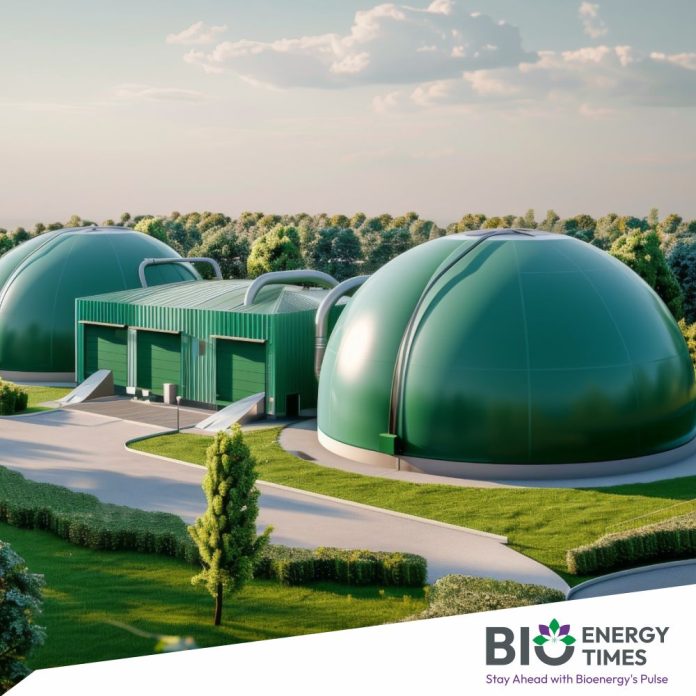In the heart of Indore, a city celebrated for its cleanliness, a significant transformation is taking place. The Indore Municipal Corporation (IMC) has established a groundbreaking facility that converts waste from thousands of households into clean, green energy. The GOBARdhan plant, inaugurated by Prime Minister Narendra Modi in 2022, is Asia’s largest municipal solid waste-based facility, generating an impressive 17,000 kilograms of Bio-CNG daily. This achievement is not merely about technology; it represents human determination, collaboration, and a commitment to a more sustainable future.
The plant is part of the Galvanizing Organic Bio-Agro Resources Dhan (GOBARdhan) initiative, which aims to turn waste into wealth. Launched in 2018 as a key element of the Swachh Bharat Mission (Grameen), GOBARdhan focuses on converting organic waste—such as animal manure, crop residue, and kitchen scraps—into renewable energy and organic fertilizers. This initiative aligns with Prime Minister Modi’s vision of a circular economy, where resources are reused, and waste is minimized.
To celebrate the 10th anniversary of the Swachh Bharat Mission, the Swabhav Swachhata Sanskaar Swachhata (4S) campaign has been introduced, running from September 17 to October 2, 2024. This campaign leads up to Swachh Bharat Diwas, which honors Mahatma Gandhi’s birth anniversary.
In Indore, the Prime Minister’s vision is put into practice daily. Segregated organic waste collected from homes and markets arrives at the plant each morning. Teams of operators, electricians, and fitters manage the sophisticated machinery that converts this waste into Bio-CNG. The process involves screening the waste, pulping it into slurry, and processing it in large anaerobic digesters. Here, microorganisms break down the organic material to produce biogas, which is then compressed into Bio-CNG, offering a cleaner alternative to fossil fuels.
With fully automated systems, the Indore GOBARdhan plant exemplifies how technology can transform waste management into an environmentally friendly process. Beyond the daily production of Bio-CNG, the facility generates over 100 tonnes of high-quality compost for local farms, creating a closed-loop system that promotes sustainable agriculture. This not only improves soil health but also reduces the need for chemical fertilizers, furthering the city’s green initiatives.
The plant also plays a vital role in cutting carbon dioxide emissions. By converting organic waste into energy, it prevents around 130,000 tonnes of carbon dioxide from being released into the atmosphere each year. Diverting waste from landfills, where it would decompose and emit harmful methane, contributes to reducing India’s overall greenhouse gas emissions and aids in the global fight against climate change.
Safety is paramount at the facility. Workers, including laborers, technicians, and quality control personnel, are equipped with Personal Protective Equipment (PPE) and participate in regular safety drills to prevent accidents. Their coordinated efforts ensure the plant operates smoothly while maintaining high production levels of Bio-CNG and compost in compliance with safety and environmental regulations.
The success of Indore’s GOBARdhan plant highlights the potential for similar transformations across urban and rural areas in India. The GOBARdhan initiative has seen the registration of over 1,300 biogas plants nationwide, with 870 already operational. Each facility not only alleviates landfill pressure but also provides farmers with a sustainable income source, allowing them to sell their waste for processing or use bio-slurry as high-quality fertilizer. Additionally, the initiative has created job opportunities in waste management, biogas production, and organic farming.
The GOBARdhan initiative is also promoting the establishment of CBG/Bio-CNG plants, with 743 registered and 106 currently operational. While seven plants are completed, 177 more are under construction, which will strengthen India’s clean energy infrastructure. These facilities are crucial for advancing sustainable transportation and energy, as they use compressed biogas (CBG)—similar to compressed natural gas (CNG)—to fuel vehicles and enhance energy security.
The impact of GOBARdhan goes beyond energy generation. By lowering greenhouse gas emissions, it supports India’s climate objectives, including commitments outlined in the Paris Agreement. It also bolsters local economies, providing farmers with additional revenue while promoting environmental sanitation in rural areas. The conversion of waste into CBG is crucial for India’s strategy to reduce dependence on imported natural gas.
Indore’s GOBARdhan plant illustrates the possibilities that arise when vision, innovation, and community come together. Similar facilities are emerging across the country, fueled by the government’s commitment to the GOBARdhan scheme. The Union Budget 2023 allocated Rs 10,000 crore for the development of 500 new “Waste to Wealth” plants, expected to significantly boost India’s clean energy sector.
As India advances toward a more sustainable future, this plant not only exemplifies the potential of waste-to-energy initiatives but also underscores the broader benefits of the GOBARdhan scheme. With more plants in the pipeline and substantial government investment, India’s clean energy future looks bright, paving the way for a greener, circular economy that benefits both urban and rural communities alike.
(Source: PIB and Ministry of Jal Shakti)
To read more about Biogas Industry News, continue reading BioEnergyTimes.com














